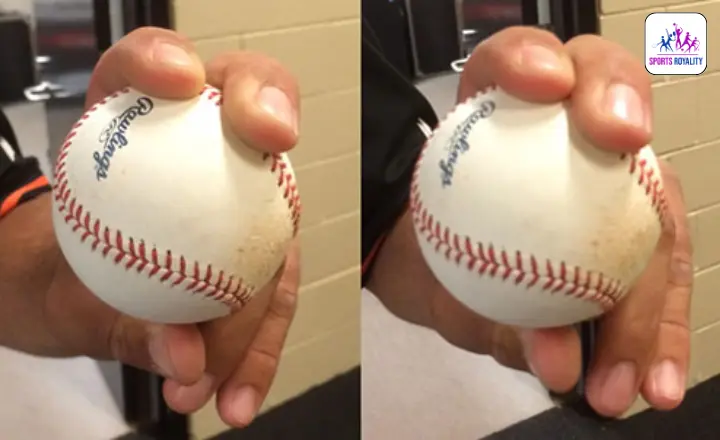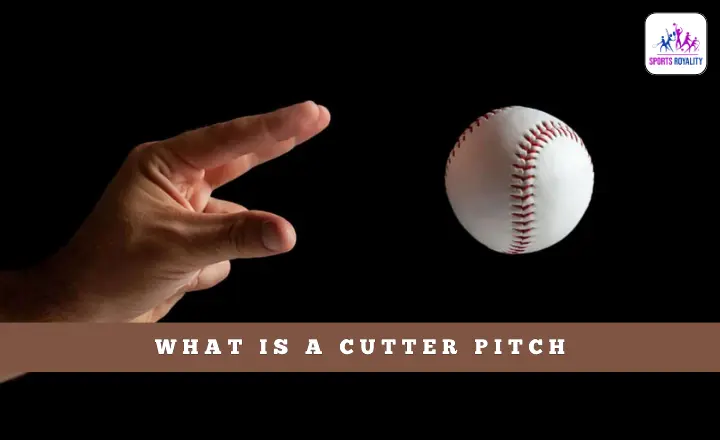Imagine a baseball pitcher who can make the ball defy gravity, zigzagging through the air like a mischievous hummingbird. Meet the cutter pitch – a deceptive and unpredictable weapon in the arsenal of elite pitchers. Often hailed as one of the most challenging pitches to hit, this elusive beast dances to its rhythm, leaving batters scratching their heads in confusion.
In this article, we will explain what is a cutter pitch, unravel their secrets, and explore how they have revolutionized their favorite pastime.
What Is A Cutter Pitch
A cutter pitch in volleyball is a deceptive serve that can catch the opponent off guard. This unique technique involves placing a lot of spin on the ball, which causes it to curve unpredictably in mid-air.
The server uses a combination of arm and wrist movements to create this spin, making it difficult for the receiving team to predict where the ball will land accurately.
What makes the cutter pitch even more intriguing is its ability to disrupt the rhythm and coordination of the opposing team. As players are trained to read and anticipate serves based on their trajectory, speed, and rotation, an unexpected curve can throw them mentally and physically off balance.

This creates confusion on the receiving side and increases the chances of scoring points for the serving team.
Incorporating cutter pitches into your arsenal adds variety and demonstrates skillful control over the ball. It requires precise hand-eye coordination, finesse in executing different spin techniques, and an understanding of exploiting weaknesses in your opponents’ positioning.
The element of surprise combined with impeccable execution makes cutter pitches invaluable for any volleyball player looking to elevate their game.
Cutter Pitch
The cutter pitch has become an essential weapon in a pitcher’s arsenal, particularly against hitters who thrive on fastballs. As the name suggests, this pitch cuts across the plate, deceiving hitters with its late movement. It’s a crafty pitch that requires precise control and impeccable timing to execute effectively.
What makes the cutter even more intriguing is its ability to baffle right- and left-handed hitters. It becomes a valuable tool for right-handed pitchers against lefties, breaking in towards their hands just as they are about to make contact with the ball. This can lead to weak contact or even swings and misses altogether.
The cutter can be as devastating for left-handed pitchers facing right-handed batters, starting outside the strike zone before sharply tailing back toward the hitter at high speed.
With its quick break and deceptive movement, it’s no wonder why so many pitchers have adopted this pitch into their repertoire. Hitters must be on high alert when they see that telltale finger placement on a fastball grip because they know what follows could leave them looking foolish at the plate.
It takes exceptional skill from pitchers and catchers to execute this pitch consistently well, but when done right, there’s nothing quite like watching a hitter swing through thin air as his bat whiffs on a perfectly executed cutter pitch.
Cutter Grip
Unlike traditional fastballs, which either break away from the pitcher’s arm side or towards it, the cutter has a distinct horizontal break. This makes it incredibly difficult for batters to anticipate their trajectory and adjust their swing accordingly.
What sets the cutter apart is its ability to deceive. Batters are conditioned to expect a four-seam or two-seam fastball, but the cutter adds an unexpected element to the mix. It looks like a fastball coming out of the pitcher’s hand but breaks sharply at the last moment, leaving batters swinging fruitlessly at thin air.

Mastering this pitch requires finesse and precision. Pitchers must have complete control over their cutter grip and release point to execute it effectively. They have to disguise their intent by throwing it with similar arm speed and motion as their regular fastball deliveries.
How to do a cutter grip
To achieve the cutter grip, start by placing your middle and index fingers across the narrow seams of the baseball, with your thumb underneath for support.
The key to throwing a successful cutter is the finger pressure and arm action. Apply firm pressure with your middle finger on one side of the ball while slightly loosening your index finger’s grip on the other side. This asymmetrical finger positioning creates spin and movement on the pitch.
When you throw a cutter, focus on maintaining a consistent release point and an arm action that mimics throwing a fastball. You will disguise the pitch from batters, making it challenging to differentiate between your fastball and cutter until it’s too late.
Cut Fastball
When a cut fastball reaches the home plate, it veers towards the pitcher’s glove-hand side.
Slider vs. Cut Fastball
Both pitches have their merits, they differ in the amount of movement they generate. The slider has a considerably larger 2-8 or 10-4 shaped form, making it difficult for batters to make solid contact.
The cutter has a much less pronounced shape and is designed to move slightly away from right-handed batters or into left-handed hitters.
The key to successfully throwing a slider lies in its shape and break. This pitch moves laterally across the plate, typically diving toward the hitter’s feet at the last moment.
This sharp break makes it an effective weapon against right-handed and left-handed hitters, as it can deceive them into swinging outside their strike zone. Pitchers must be cautious with this pitch, as throwing it too often can stress their arm due to its intense spin.
The cut fastball relies more on precision than movement. It’s thrown with similar velocity to a regular fastball but features slight lateral movement towards either side of home plate depending on which the pitcher uses arm angle; Righties make it move away from right-handed batters, while lefties move inside towards left-handers.
The cutter effectively neutralizes power hitters who rely on pulling pitches by jamming them inside, creating weak contact, or even inducing ground balls.
Fastball vs. Cut Fastball
When the cutter contacts the plate, it deviates slightly from the fastball’s path.
Right Handed Pitcher
Most hitters are accustomed to facing righties due to their dominance in baseball. This familiarity can challenge left-handed hitters who need more quality southpaws in the league. The subtle movements and reverse angles induced by a right-hander’s pitches often serve as an advantage, making hitting against them more difficult.
Being a right-handed pitcher allows for better defensive positioning on the field. As most batters tend to pull balls towards left field, having a strong-arm righty pitching can help set up favorable defensive alignments with a strong third baseman and centerfielder ready for potential line drives or hard-hit ground balls.

Right-handed pitchers bring an undeniable excitement and intensity to any game they pitch. With their arsenal of pitches honed over countless hours of practice, they take control of each at-bat with determination and skill.
Conclusion
In the above content, we have explained in detail what is a cutter pitch. The cutter pitch is highly effective and deceptive and can confound even the most experienced batters.
Its combination of late movement and increased velocity makes it a formidable weapon in any pitcher’s arsenal. By mastering the mechanics and grip of the cutter, pitchers can keep hitters off balance and induce weak contact or swings and misses.
Pitchers must remember that control and command are essential when throwing this pitch, as mistakes can result in hittable pitches or walks. With practice and dedication, pitchers can harness the cutter’s power to elevate their game.
FAQ’s
Are there any risks associated with throwing cutter pitches?
There is always a risk of injury when throwing pitches repeatedly. Seeking proper coaching and maintaining good form can help minimize these risks.
Can anyone learn to throw a cutter pitch?
While anyone can attempt to learn how to throw a cutter pitch, it may require practice and coordination to master its mechanics effectively.

